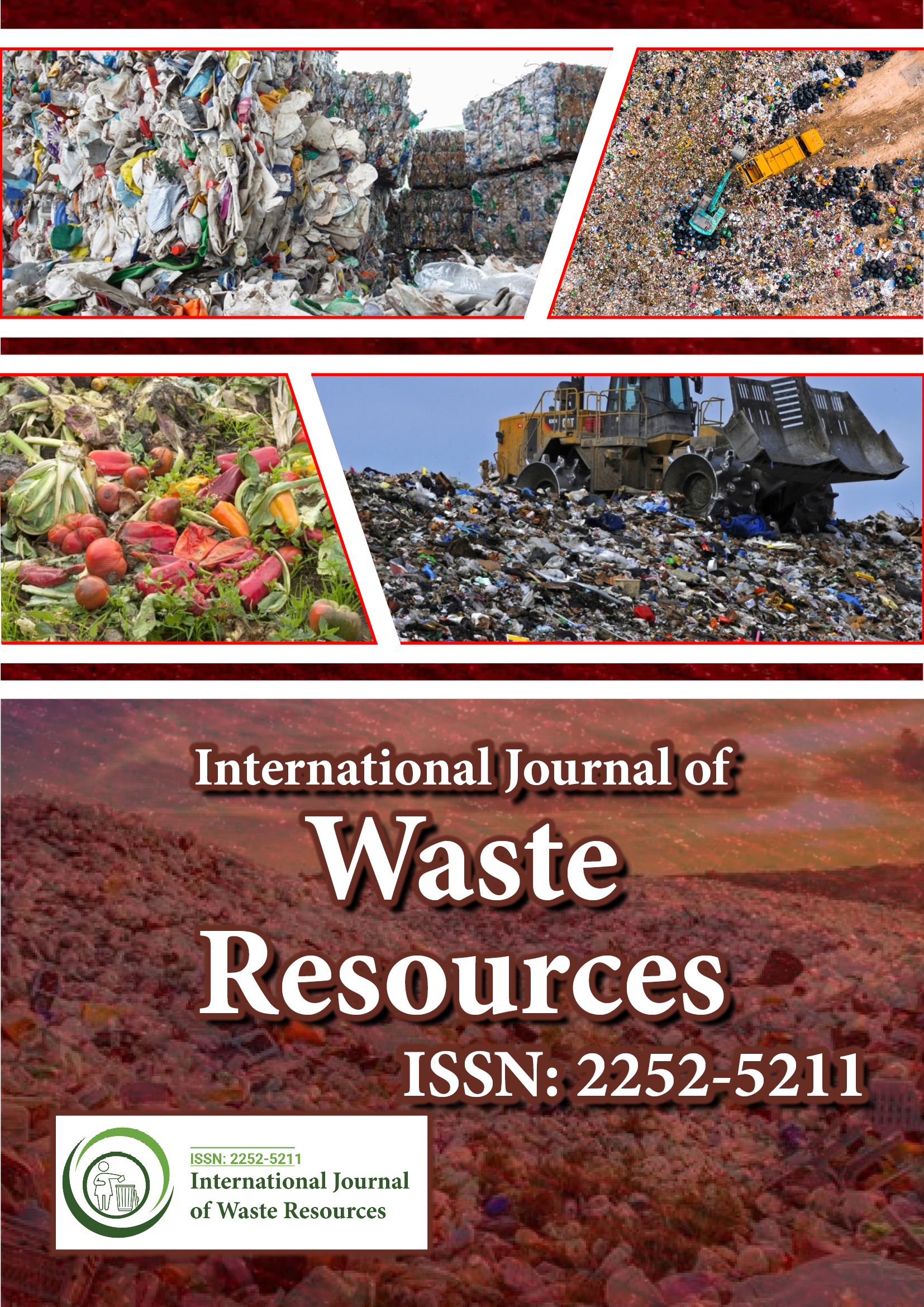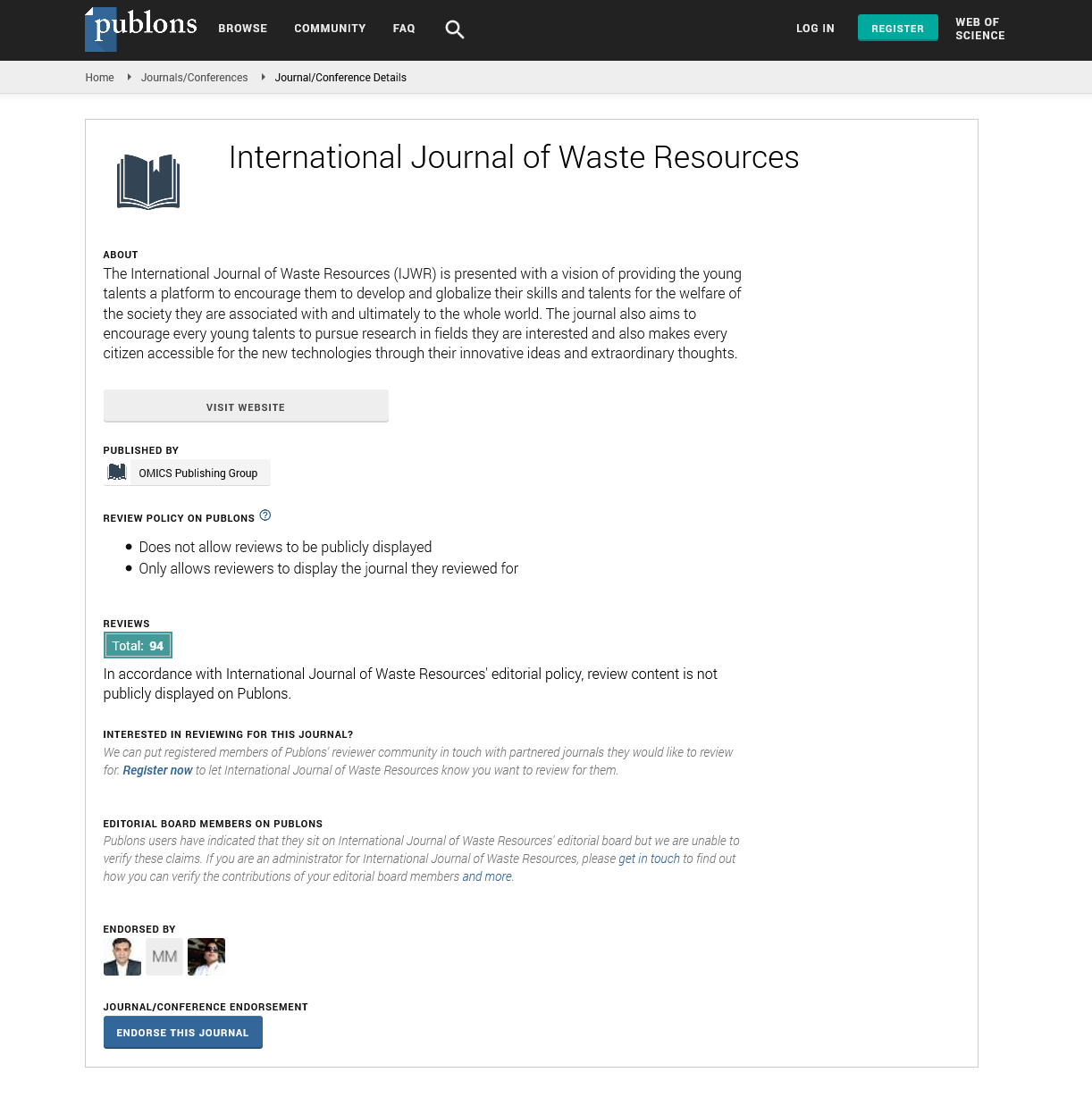Indexed In
- Open J Gate
- The Global Impact Factor (GIF)
- Open Archive Initiative
- VieSearch
- International Society of Universal Research in Sciences
- China National Knowledge Infrastructure (CNKI)
- CiteFactor
- Scimago
- Ulrich's Periodicals Directory
- Electronic Journals Library
- RefSeek
- Directory of Research Journal Indexing (DRJI)
- Hamdard University
- EBSCO A-Z
- Publons
- Google Scholar
Useful Links
Share This Page
Journal Flyer

Open Access Journals
- Agri and Aquaculture
- Biochemistry
- Bioinformatics & Systems Biology
- Business & Management
- Chemistry
- Clinical Sciences
- Engineering
- Food & Nutrition
- General Science
- Genetics & Molecular Biology
- Immunology & Microbiology
- Medical Sciences
- Neuroscience & Psychology
- Nursing & Health Care
- Pharmaceutical Sciences
Perspective - (2023) Volume 13, Issue 2
Composition of Fly Ash in Solid Waste Management and their Disposal Methods
Gordana Mikavica*Received: 14-Feb-2023, Manuscript No. IJWR-23-20751; Editor assigned: 07-Feb-2023, Pre QC No. IJWR-23-20751(PQ); Reviewed: 08-Mar-2023, QC No. IJWR-23-20751; Revised: 15-Mar-2023, Manuscript No. IJWR-23-20751(R); Published: 22-Mar-2023, DOI: 10.35248/ 2252-5211.23.13.524
Description
Fly ash is a waste product from municipal solid waste incineration that contains high amounts of chlorine and other pollutants. It can be processed by various methods such as water washing, heat treatment, magnetic separation, chemical stabilization, and bioleaching to remove the harmful substances and make it suitable for reuse. Some of the applications of fly ash include cement production, soil improvement, wastewater treatment, paint and enamel production, and horticulture. It can be classified as hazardous waste depending on its source and composition. Fly ash from coal combustion contains high levels of heavy metals, dioxins, and other pollutants that can harm human health and the environment. Fly ash from solid waste incineration may contain even higher levels of contaminants than coal ash and is often regulated as hazardous waste. However, fly ash can also be treated and reused for various purposes, such as cement production, soil improvement, wastewater treatment, etc. Therefore, fly ash is not always hazardous waste, but it requires proper management and disposal to avoid negative impacts. It is not biodegradable waste. It is a solid waste that is produced from coal combustion or solid waste incineration. It contains toxic substances and heavy metals that do not decompose easily and can persist in the environment for a long time. However, fly ash can also be treated and reused for various purposes, such as concrete production, soil improvement, wastewater treatment, etc. By reusing or recycling fly ash, the impact of fly ash on the environment can be reduced, instead of simply sending this hazardous waste to the landfill. Some of the challenges of reusing or recycling fly ash are:
• It has a high variability in its composition and properties depending on the source and type of coal, combustion conditions, and pollution control equipment. This makes it difficult to standardize and optimize the treatment and reuse processes for different applications.
• It requires proper pre-treatment to remove the toxic substances and heavy metals before it can be reused or recycled. This can increase the cost and complexity of the reuse or recycling process.
• It faces regulatory and market barriers that limit its reuse or recycling potential. For example, fly ash is classified as a hazardous waste in some countries, which restricts its transportation and utilization. Moreover, fly ash competes with other materials that have established markets and quality standards, such as cement, aggregates, etc.
• It lacks stimulating market mechanisms and incentives for its reuse or recycling. For example, there is a low demand for fly ash products due to lack of awareness, trust, and acceptance among consumers and end-users. Furthermore, there is a low environmental payment for commercial companies that dispose of fly ash in landfills, which reduces their motivation to invest in reuse or recycling projects. Reusing or recycling fly ash can reduce the cost and liability of fly ash disposal. For example, fly ash can be sold as a raw material for various industries, which can generate revenue and create jobs. It can also reduce the need for landfills and the associated risks of leaching and spills. Reusing or recycling fly ash can enhance the performance and quality of various products and applications.
Conclusion
For example, fly ash can improve the strength, durability, and workability of concrete. It also provides nutrients and pH correction for soils and plants. It also increases the efficiency and yield of metal recovery processes. Therefore, reusing or recycling fly ash can provide environmental, economic, and technical benefits for various sectors and stakeholders. Therefore, reusing or recycling fly ash faces several technical, economic, regulatory, and social challenges that need to be addressed to enhance its sustainability and circularity.
Citation: Mikavica G (2023) Composition of Fly Ash in Solid Waste Management and their Disposal Methods. Int J Waste Resour. 13:524.
Copyright: © 2023 Mikavica G. This is an open-access article distributed under the terms of the Creative Commons Attribution License, which permits unrestricted use, distribution, and reproduction in any medium, provided the original author and source are credited.

